Samsung Galaxy S23 vs iPhone 14: the standard and Plus models compared
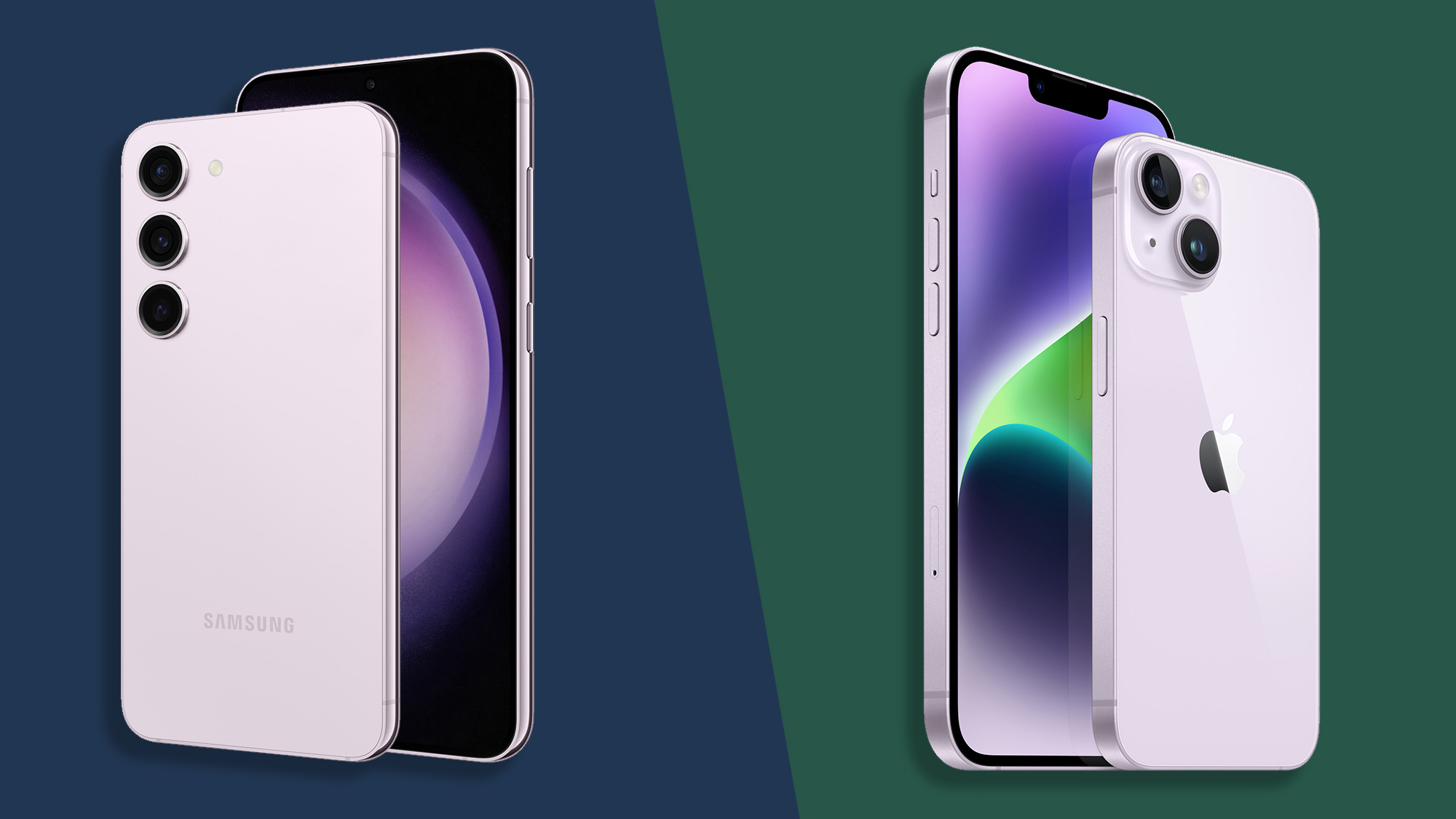
A safe but competent and compact flagship that's new on the outside but familiar on the inside.
Pros
- Bespoke Qualcomm Snapdragon 8 Gen 2
- A new look
- Small and ready to go
Cons
- Not different enough
- Should have a 108MP sensor
- No satellite communications
A well built phone with handy features, but it can feel a bit dated.
Pros
- Quality build
- Satellite communications
- Good TrueDepth camera
Cons
- The notch remains
- Last generation A15 Bionic chip
- No optical zoom
The Samsung Galaxy S23 and Samsung Galaxy S23 Plus aren't as exciting as the Samsung Galaxy S23 Ultra, but they’re also a lot more affordable – and will probably be very popular as a result.
They have a lot of competition in this space though, as the S23 is directly competing with the iPhone 14, and for the first time Apple has a clear competitor to the Plus model too, in the form of the iPhone 14 Plus.
So with that in mind we’ve compared the standard Galaxy S23 and Galaxy S23 Plus with the standard iPhone 14 and iPhone 14 Plus, to see which is likely to come out on top.
Samsung Galaxy S23 vs iPhone 14: Price and availability
The Samsung Galaxy S23 and Galaxy S23 Plus are both shipping on February 17, and will be available globally. As for the price, the Samsung Galaxy S23 starts at $799.99 / £849 / AU$1,349 and the Galaxy S23 Plus starts at $999.99 / £1,049 / AU$1,649.
That, for the record, makes them the same price as the Samsung Galaxy S22 series in the US, but £80-£100 more in the UK and AU$100 more in Australia.
That starting price gets you a model with 128GB of storage in the case of the Samsung Galaxy S23 and 256GB in the case of the Galaxy S23 Plus, but there's also a 256GB S23 model for $859.99 / £899 / AU$1,449, and a 512GB S23 Plus model for $1,119.99 / £1,149 / AU$1,849.
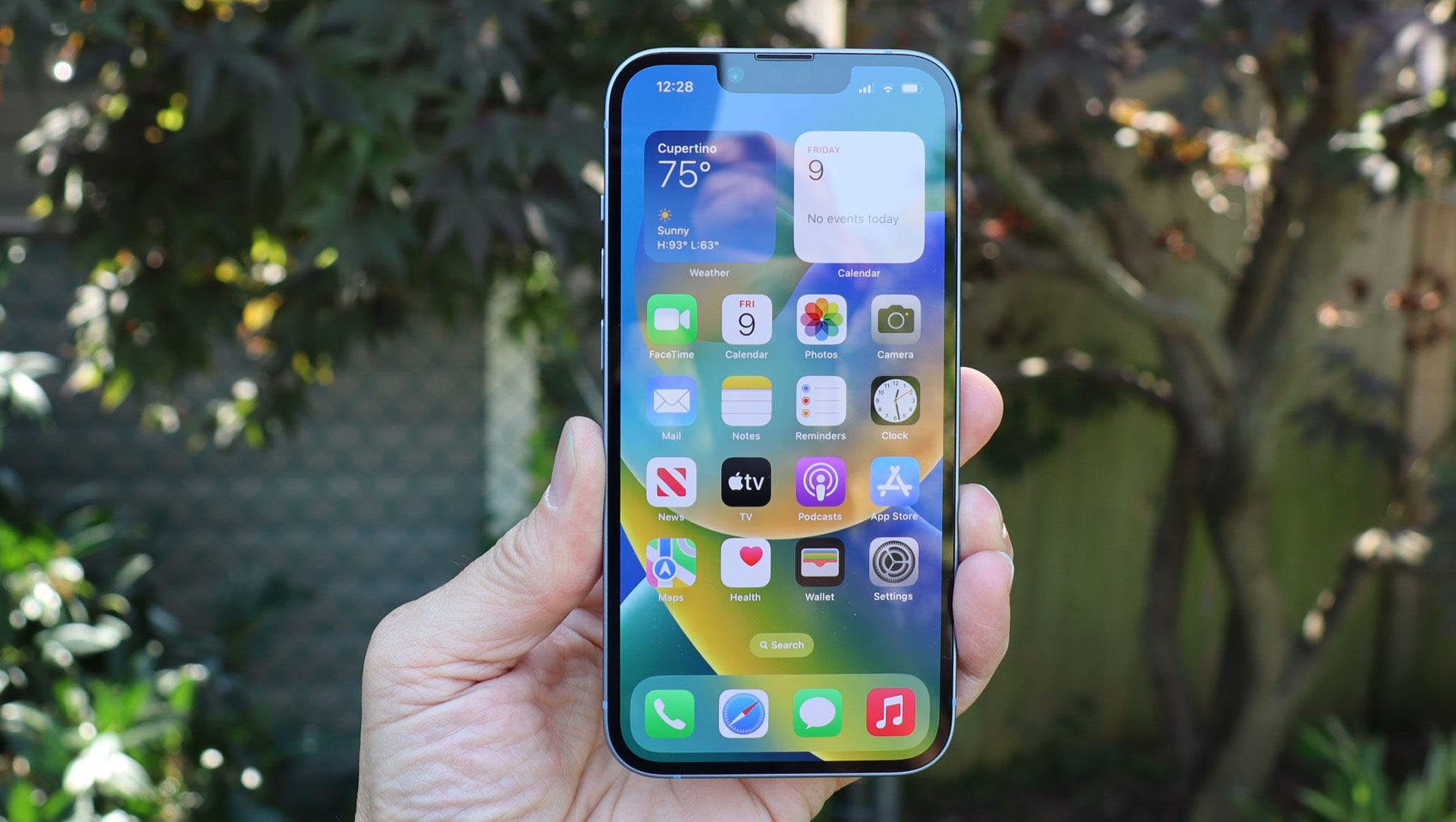
The iPhone 14 meanwhile launched in September 2022 and starts at $799 / £849 / AU$1,339 for 128GB of storage, rising to $899 / £959 / AU$1,579 for 256GB, and $1,099 / £1,179 / AU$1,899 for 512GB.
Sign up for breaking news, reviews, opinion, top tech deals, and more.
Finally, the iPhone 14 Plus starts at $899 / £949 / AU$1,579 for a 128GB model, rising to $999 / £1,059 / AU$1,749 for 256GB, and $1,199 / £1,279 / AU$2,099 for 512GB.
So the standard phones have broadly comparable prices to each other, as do the Plus models, but with slight differences depending on region.
Samsung Galaxy S23 vs iPhone 14: Design
The Samsung Galaxy S23 and Galaxy S23 Plus look pretty much identical to each other – just with the Plus model being bigger.
They have flat screens with a punch-hole camera in the top center, while on the back the cameras jut out of the rear individually, rather than being housed in a camera block, as on the S22 and S22 Plus.
The bezels are narrow – as you’d hope for high-end phones – and the back is made from glass and the frame from metal.
In fact, both the back and display use tough Gorilla Glass Victus 2 for protection, and the phones include an IP68 rating for dust and water resistance, and come in a choice of Cream, Lavender, Green, Phantom Black, Lime, and Graphite shades. You can read more about the colors in our Samsung Galaxy S23 colors guide.

As for their weight and dimensions, the Samsung Galaxy S23 is 146.3 x 70.9 x 7.6mm and 168g, while the Samsung Galaxy S23 Plus is 157.8 x 76.2 x 7.6mm and 196g.
Next, we come to the iPhone 14 and iPhone 14 Plus, which also have flat screens, a glass back and a metal frame. However, they have a notch rather than a punch-hole camera, leaving them arguably looking less modern.
They also have a camera block on the back rather than individual lenses, but they have an IP68 rating like Samsung’s phones, and they use Ceramic Shield tech to protect the display. So there are a lot of similarities here.
The biggest difference is arguably the color choices, with these phones coming in a choice of Midnight (black), Purple, Starlight (off white), Product Red, or Blue.
They also have different weights and dimensions, of course, with the iPhone 14 being 146.7 x 71.5 x 7.8mm and 172g, while the iPhone 14 Plus is 160.8 x 78.1 x 7.8mm and 203g.
So the iPhone 14 is slightly larger and heavier than the Galaxy S23, while the iPhone 14 Plus is a little larger and heavier than the Galaxy S23 Plus, but not by much.
Samsung Galaxy S23 vs iPhone 14: Display
The Samsung Galaxy S23 has a 6.1-inch 1080 x 2340 AMOLED screen with a 120Hz refresh rate, while the Samsung Galaxy S23 Plus has the same specs but attached to a 6.6-inch screen. That leads to 425 pixels per inch for the S23 and 393 for the Samsung Galaxy S23 Plus.
As for the iPhone 14, that has a 6.1-inch 1170 x 2532 OLED screen with a 60Hz refresh rate and 460 pixels per inch, while the iPhone 14 Plus has a 6.7-inch 1284 x 2778 OLED display with a 60Hz refresh rate and 458 pixels per inch.
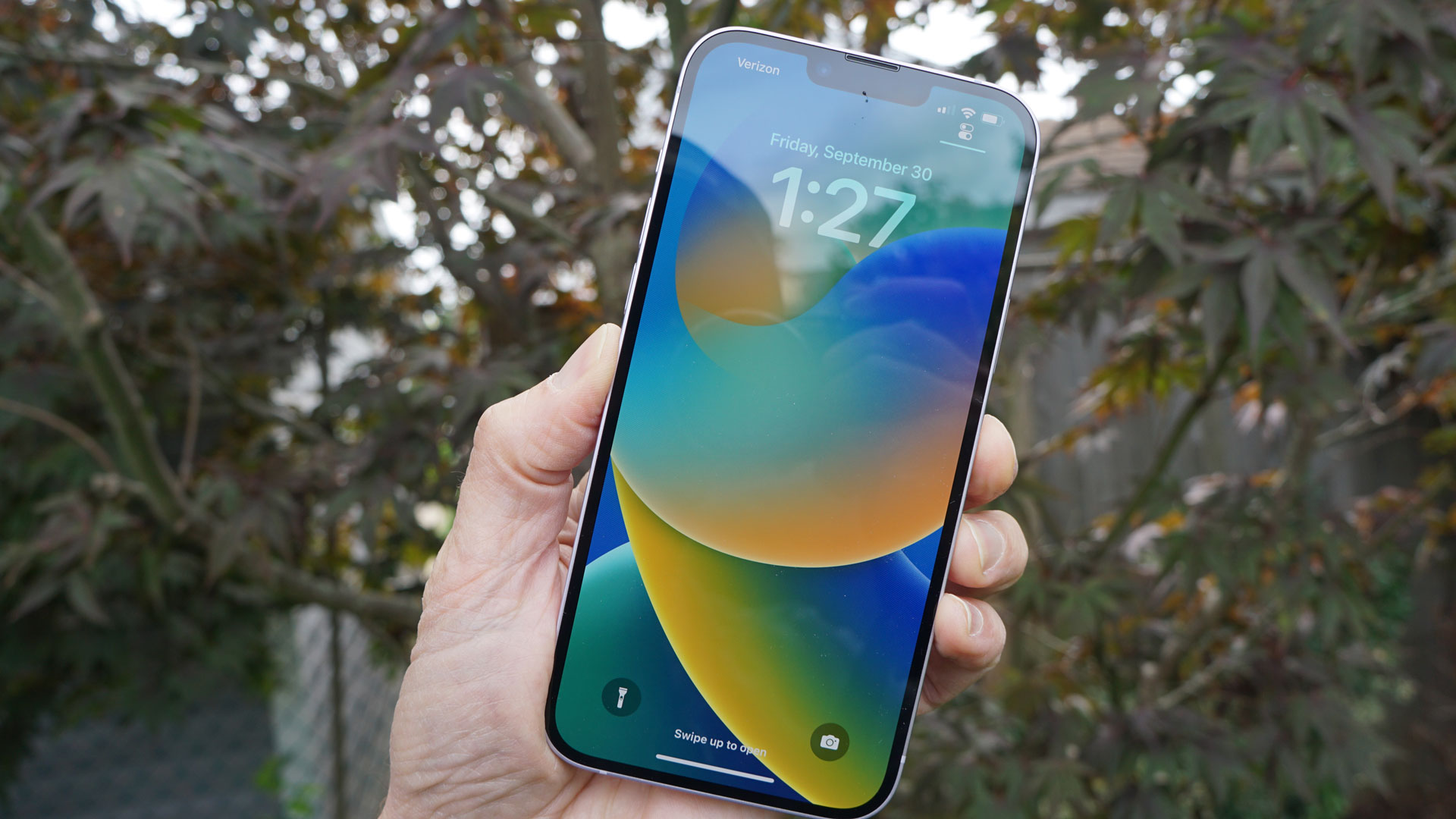
The main difference here then is that the Samsung Galaxy S23 series has a higher refresh rate than these iPhones.
That might give the screens on Samsung’s phones a slight edge overall, but it’s not a complete victory as the iPhones have marginally higher-resolution displays, and the iPhone 14 Plus’s screen is a little bigger than the Samsung Galaxy S23 Plus's.
Samsung Galaxy S23 vs iPhone 14: Cameras
The Samsung Galaxy S23 and Galaxy S23 Plus have the same cameras as each other – namely a 50MP f/1.8 main sensor, a 12MP f/2.2 ultra-wide, and a 10MP f/2.4 telephoto, with 3x optical zoom, along with a 12MP front-facing camera.
The iPhone 14 and iPhone 14 Plus also have the same cameras as each other, specifically a 12MP f/1.5 main snapper, a 12MP f/2.4 ultra-wide, and a 12MP f/1.9 selfie camera.

So these Galaxy S23 models have an extra sensor – specifically a telephoto one. The main sensor on the Samsung Galaxy S23 and S23 Plus also has more megapixels to play with.
Of course, megapixels aren’t everything and Apple’s phones take great photos, but for versatility at the very least, the Galaxy S23 and Galaxy S23 Plus arguably have the better setup. Though it's a shame they haven't inherited the Samsung Galaxy S22 Ultra's 108MP sensor now that the S23 Ultra has moved on to a 200MP one.
Samsung Galaxy S23 vs iPhone 14: Battery
The Samsung Galaxy S23 has a 3,900mAh battery with 25W wired charging and 15W wireless charging, while the Samsung Galaxy S23 Plus has a 4,700mAh battery with 45W wired charging and 15W wireless charging.
That has the iPhone 14 and iPhone 14 Plus beat on paper, as the former has a 3,279mAh battery with 20W wired charging and 15W wireless, while the latter has a 4,323mAh battery with 20W wired charging and 15W wireless.
The big win here then is the relatively speedy 45W charging speed offered by the Samsung Galaxy S23 Plus.
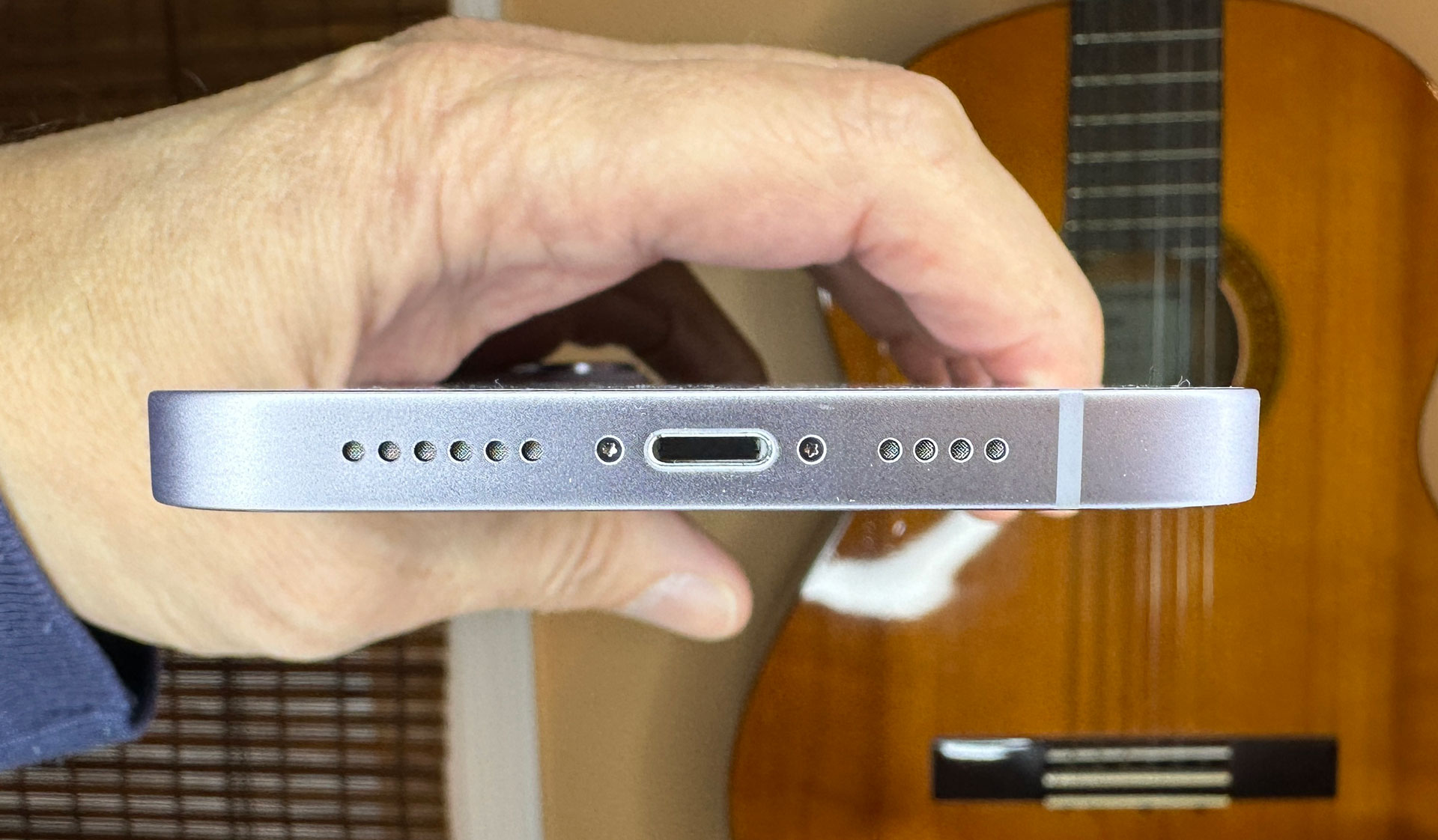
In other areas the two Plus phones look fairly similar to each other for battery specs, as do the two standard models – albeit with Samsung having the edge for both speed and capacity.
However, in our tests we found the iPhone 14 Plus had impressively good battery life, and Apple tends to make small capacities go further, so it will be interesting to see whether these Samsung Galaxy S23 models have Apple’s comparable phones beat in practice. We'll know once we've put them through a full review.
Samsung Galaxy S23 vs iPhone 14: Specs and features
| Samsung Galaxy S23 | Samsung Galaxy S23 Plus | iPhone 14 | iPhone 14 Plus | |
|---|---|---|---|---|
| Price: | $799.99 / £769 / AU$1,249 | $999.99 / £1,049 / AU$1,649 | $799 / £849 / AU$1,339 | $899 / £949 / AU$1,579 |
| Dimensions: | 146.3 x 70.9 x 7.6mm | 157.8 x 76.2 x 7.6mm | 146.7 x 71.5 x 7.8mm | 160.8 x 78.1 x 7.8mm |
| Weight: | 168g | 196g | 172g | 203g |
| OS: | Android 13 | Android 13 | iOS 16 | iOS 16 |
| Screen Size: | 6.1-inch | 6.6-inch | 6.1-inch | 6.7-inch |
| Resolution: | 1080 x 2340 | 1080 x 2340 | 1170 x 2532 | 1284 x 2778 |
| CPU: | Qualcomm Snapdragon Gen 8 Gen 2 Mobile Platform for Galaxy | Qualcomm Snapdragon Gen 8 Gen 2 Mobile Platform for Galaxy | A15 Bionic | A15 Bionic |
| RAM: | 8GB | 8GB | 6GB | 6GB |
| Storage: | 128GB / 256GB | 256GB / 512GB | 128GB / 256GB / 512GB | 128GB / 256GB / 512GB |
| Battery: | 3,900mAh | 4,700mAh | 3,279mAh | 4,323mAh |
| Rear Cameras: | 50MP wide, 12MP ultrawide, 10MP telephoto | 50MP wide, 12MP ultrawide, 10MP telephoto | 12MP wide, 12MP ultrawide | 12MP wide, 12MP ultrawide |
| Front camera: | 12MP | 12MP | 12MP | 12MP |
You shouldn’t feel short on power with any of these phones – Samsung’s run a supercharged version of the already flagship-class Snapdragon 8 Gen 2 chipset, while Apple’s use the company’s own powerful A15 Bionic chipset.
If anything, the Samsung Galaxy S23 series might have the edge, which isn’t usually the case, but Apple decided to use a year-old chipset in the basic and Plus models of the iPhone 14. Either way though, there won't be much in it.
For RAM, you’ll get 8GB with the Samsung Galaxy S23 and Galaxy S23 Plus, while the iPhone 14 and iPhone 14 Plus have just 6GB. But comparing RAM amounts in iPhones with Android phones is almost meaningless, because Apple makes a little go a long, long way.

Now we come to storage, and for that the Samsung Galaxy S23 comes with a choice of 128GB or 256GB. The Samsung Galaxy S23 Plus meanwhile comes with a choice of 256GB or 512GB.
The iPhone 14 and iPhone 14 Plus come with more options, as there’s the choice of 128GB, 256GB or 512GB for both phones. Of course, they don’t have a microSD card slot, but the Samsung phones don't either.
The biggest single difference between the iPhones and the Samsung Galaxy phones though is the software, with the iPhone 14 series running iOS 16, while the Samsung Galaxy S23 series run Android 13, overlaid with Samsung’s One UI 5.1 interface. There’s no clear winner here, it just comes down to personal preference.
There isn't much difference in connectivity options, as all four phones support 5G. However, these iPhones offer emergency satellite communications, which you don't get with Samsung's phones.
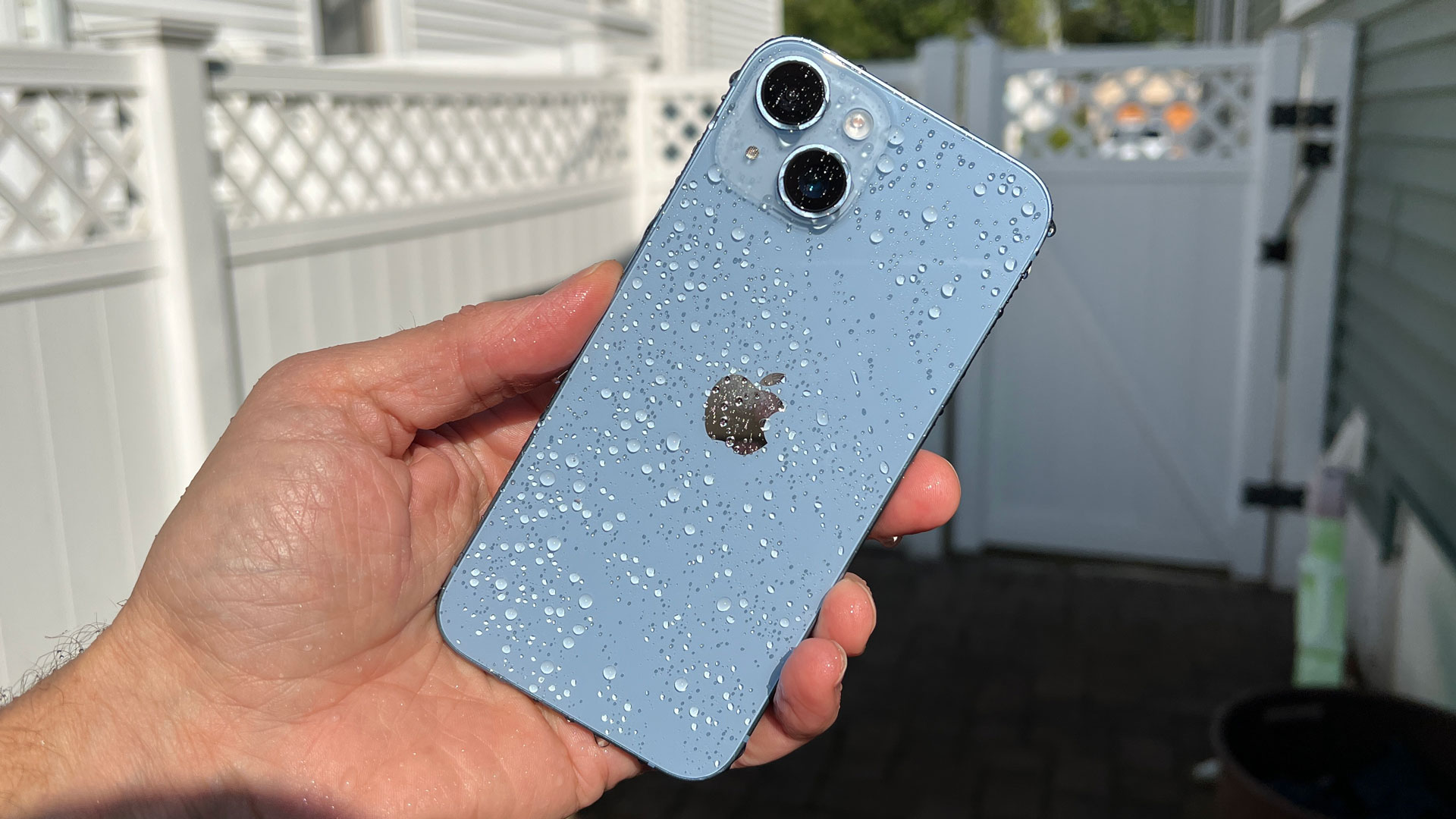
Which one should you buy?
Based on specs and features, the Samsung Galaxy S23 and Galaxy S23 Plus should pose strong competition to the iPhone 14 and iPhone 14 Plus.
Samsung’s phones have higher refresh rates, an arguably more modern design due to the lack of a notch, an extra camera, a newer chipset, bigger batteries, faster charging, and – at least in the case of the S23 Plus – more starting storage.
The iPhones have fewer wins, at least on paper, but their screens are slightly higher resolution, there are more storage options, they offer emergency satellite communications, and the iPhone 14 Plus has a marginally larger screen than the Samsung Galaxy S23 Plus.
Beyond that the available colors and their operating systems differ, while most other aspects are quite similar.
The Samsung Galaxy S23 series is arguably slightly better on paper then, but it’s going to be a very close fight, and the overall winners won’t be known until Samsung’s phones have been put through a full TechRadar review. It’s likely though that these will all rank among the best smartphones.
James is a freelance phones, tablets and wearables writer and sub-editor at TechRadar. He has a love for everything ‘smart’, from watches to lights, and can often be found arguing with AI assistants or drowning in the latest apps. James also contributes to 3G.co.uk, 4G.co.uk and 5G.co.uk and has written for T3, Digital Camera World, Clarity Media and others, with work on the web, in print and on TV.